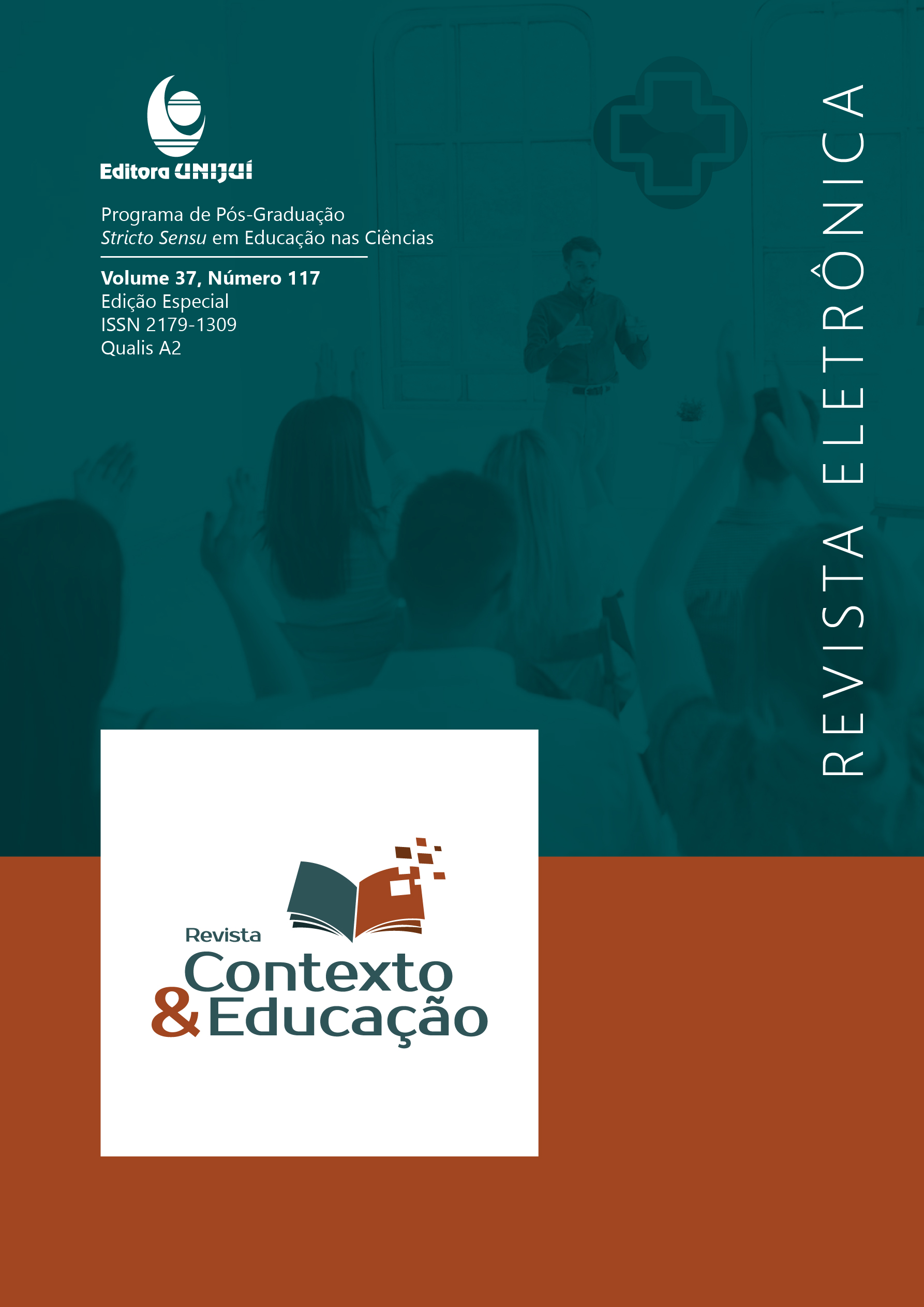BULLYING ESCOLAR: O QUE SABEM AS CRIANÇAS DO PRIMEIRO ANO DO ENSINO FUNDAMENTAL
DOI:
https://doi.org/10.21527/2179-1309.2022.117.12878Keywords:
Desenhos, Narrativas, Infância, Bullying EscolarAbstract
Ações intencionais e repetidas, em forma de agressão, exclusão ou zombaria entre os pares, cometidas ao longo de um período de tempo, são chamadas de bullying. Um fenômeno relacional e complexo, que costuma estar dissolvido nas relações entre os escolares. Esta pesquisa teve por objetivo investigar se no cotidiano das crianças do primeiro ano do ensino fundamental aparecem expressões do bullying escolar. O estudo foi realizado com 10 crianças (6 a 7 anos) de escolas particulares do estado de Pernambuco-Brasil. Através de videochamadas e de um roteiro semi-estruturado, as crianças foram inicialmente convidadas a realizar desenhos e narrativas sobre seu cotidiano escolar. Na mesma videochamada, elas ouviram uma história sobre bullying escolar, contada pela pesquisadora, e depois disso, criaram mais um desenho sobre uma situação de bullying que tenham vivenciado ou testemunhado. Para o tratamento de dados, a partir das transcrições das narrativas das crianças sobre os desenhos, foi feita uma análise temática dos conteúdos. Os resultados apontaram para a ocorrência de experiências de bullying no cotidiano escolar das crianças. Situações de bullying relacional e direto foram descritas pelos participantes. As crianças mostraram compreensão sobre as situações de bullying, e se reconheceram nessas situações. Os dados demonstram que as narrativas das crianças situam a ocorrência bullying no seu cotidiano escolar infantil e indicam que elas se sentem afetadas por esses eventos, o que sugere a importância de mais publicações sobre o tema e de ações interventivas, especialmente de caráter preventivo para a violência escolar, e o bullying infantil.
Downloads
Published
How to Cite
Issue
Section
License
By publishing in Revista Contexto & Educação, authors agree to the following terms:
All works are published under the Creative Commons Attribution 4.0 International License (CC BY 4.0), which allows:
Sharing — to copy and redistribute the material in any medium or format;
Adaptation — to remix, transform, and build upon the material for any purpose, even commercially.
These permissions are irrevocable, provided that the following terms are respected:
Attribution — authors must be properly credited, a link to the license must be provided, and any changes made must be indicated.
No additional restrictions — no legal or technological measures may be applied that legally restrict others from doing anything the license permits.
Notices:
The license does not apply to elements that are in the public domain or covered by legal exceptions.
The license does not grant all necessary rights for specific uses (e.g., image rights, privacy, or moral rights).
The journal is not responsible for the opinions expressed in the articles, which are the sole responsibility of the authors. The Editor, with the support of the Editorial Board, reserves the right to suggest or request modifications when necessary.
Only original scientific articles presenting research results of interest that have not been previously published or simultaneously submitted to another journal with the same purpose will be accepted.
Mentions of trademarks or specific products are intended solely for identification purposes and do not imply any promotional relationship by the authors or the journal.
License Agreement (for articles published from October 2025): Authors retain the copyright to their article and grant Revista Contexto & Educação the right of first publication.


